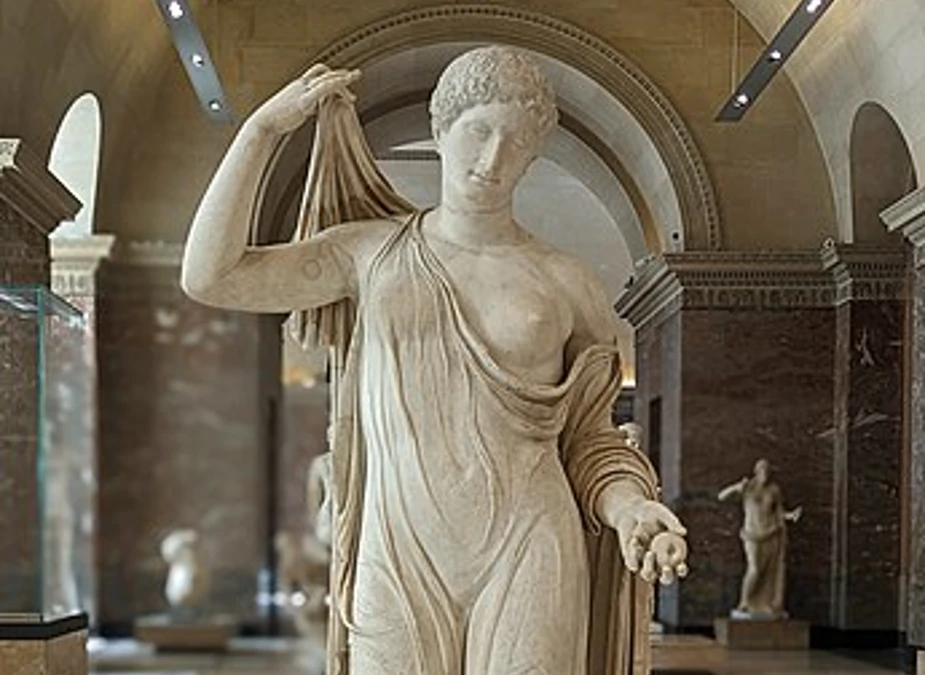Pompeii statues are the various sculptures and artworks found in the ancient city of Pompeii.
These statues were buried under volcanic ash and pumice during the eruption of Mount Vesuvius in 79 AD.
They were a major part of archaeological discoveries when Pompeii was excavated.
By seeing these statues on your Pompeii visit, you can learn more about the art, culture, and daily lives of the ancient Romans who lived in Pompeii.
Where are the Statues in Pompeii?
You can see these statues at the archaeological site of Pompeii, located in Naples.
Address: Via Villa dei Misteri, 1, 80045 Pompei, NA, Italy
They are standing at the forum, near the temples and at the House of the Faun.
At the Villa of Mysteries and the Garden of Fugitives, in addition to statues, there are paintings and plaster casts of the victims.
Other than Pompeii, the statues are preserved at different locations, like the National Archaeological Museum of Naples, the Hermitage Museum and the Louvre Museum in Paris.
What Iconic Statues Are There at Pompeii?
Some of the iconic statues at Pompeii are:
Dancing Faun:
Location: House of Faun, Via Villa dei Misteri, 2, 80045 Pompei, NA, Italy
The statue of the Dancing Faun is located at the House of Faun, one of Pompeii’s largest and most luxurious residences.
A faun is a mythological creature that is part human and part goat.
The statue shows the young faun dancing joyfully with graceful movements and expressions.
It is made up of white marble and highlights the exceptional skill of the early Roman sculptors.
Venus Genetrix

Location: Temple of Venus, 80045 Pompei, Metropolitan City of Naples, Italy
The Venus Genetrix Statue is a classic representation of Venus, the Roman goddess of love.
You can see her statue at the Temple of Venus, near the Forum.
The marble statue portrays Venus in a graceful pose with flowing drapery, reflecting the admiration of Greek art by the Ancient Romans.
It is believed that the statue was kept in a villa before excavation. Later, it was moved to the Temple of Venus and found there.
Eumachia Statue
Location: Building of Eumachia, Eastern side of the Forum at Pompeii
You can also see the statue of Eumachia, a prominent priestess in Pompeii during the 1st century AD.
She was believed to be the daughter of Lucius Eumachius, a successful brickmaker.
Eumachia was an influential woman in Pompeii who was known for her significant contributions and important role in building the Macellum, a market building.
The statue stands on the eastern side of the forum, which was built by Eumachia herself.
The statue represents Eumachius standing and wearing the traditional garments of a Roman matron, including a stola (a long, flowing dress) and a palla (a draped cloak).
Her attire shows her high social standing and highlights her societal respect and recognition.
It is believed to be made to remember her significant contributions to Pompeian society.
Hermes Statue

Location: House of Faun, Via Villa dei Misteri, 2, 80045 Pompei, NA, Italy
The Statue of Hermes, made of bronze, is located at the House of the Faun.
It is dedicated to Hermes, the Greek god of travel, trade, and communication, and is a testament to the influence of Greek tradition on ancient Roman beliefs and art.
This statue shows Hermes in a dynamic pose, highlighting his musculature and indicating his role as a swift messenger.
Pompeii secrets? You’re invited in!
Join millions of happy travelers by booking with our world-trusted partners.
Diana of Pompeii
Location: Santuario di Apollo, Via Villa dei Misteri, 4, 80045 Pompei NA, Italy
The Diana of Pompeii is a marble statue dedicated to Diana, the goddess of the hunt in Roman mythology.
Diana is the sister of Apollo, and her statue is located in the Temple of Apollo in Pompeii.
The statue shows Diana’s beauty and strength together.
She is standing in a relaxed pose, with one leg bearing her weight and the other slightly bent. She holds a bow and a quiver of arrows.
Why visit Pompeii Statues?

The statues at Pompeii are not just marble or bronze pieces. They are a gateway to the history of Rome and the ancient Romans.
Here are the reasons to see these statues:
To See Roman Art:
Pompeii statues truly showcase ancient Roman art and craftsmanship with exceptional details and quality. You can see this in every statue at Pompeii.
Learn about Diverse Cultures and Mythologies:
The statues in Pompeii feature a wide range of figures, from mythological gods and goddesses like Hermes and Diana to notable local citizens such as Eumachia.
It will help you understand a comprehensive view of Roman society and its cultural values.
To Learn about History:
These statues let you take a peek at ancient Rome’s daily life and mythology.
You can also learn more about the Roman civilization and the history of Pompeii and its people.
Admire their Preservation:
The statues in Pompeii have been remarkably preserved under volcanic ash for centuries.
Later, archaeologists and scientists put much effort into uncovering and maintaining them.
You can learn about their preservation from the archaeologists during the guided tour of Pompeii.
FAQs
1. Are the statues in Pompeii real?
Yes, the statues in Pompeii are real ancient artifacts. The ancient Romans who lived in Pompeii made them of marble or bronze.
These statues were preserved under volcanic ash when Mount Vesuvius erupted in 79 AD and have been carefully excavated and preserved by archaeologists.
2. What is the most famous statue in Pompeii?
One of the most famous statues in Pompeii is the statue of the Dancing Faun, located in the House of the Faun.
This bronze statue shows the small faun dancing with graceful expressions and moves, showcasing the skill of the sculptor.
3. Who was Eumachia, and why was she well-known in Pompeii?
Eumachia was a prominent priestess and influential public figure in Pompeii during the 1st century AD.
She was well known for her significant contributions to the city in economic and religious matters, particularly her construction of the Building of Eumachia, a large market building.
4. Who is the goddess Diana in Pompeii?
Diana in Pompeii is the Roman goddess of the hunt, the moon, and nature.
A marble statue of her, known as the “Diana of Pompeii,” was found in the Temple of Apollo. It shows her beauty and strength.
5. Where is the Hermes statue located?
The Hermes statue is located in the House of the Faun in Pompeii.
6. What is the significance of Venus and her statue in Pompeii?
The Roman goddess Venus was the goddess of love, beauty, and fertility.
It was revered as Pompeii’s patron deity. Her temple was situated prominently at the city’s southern edge, overlooking the river plain below.
7. Who is the Indian goddess statue in Pompeii?
The Pompeii Lakshmi is a small bronze statue of the Hindu goddess Lakshmi. It was found in the ruins of Pompeii during excavation.
8. Why did the people of Pompeii turn to stone?
No, the people of Pompeii did not turn to stone. When Mount Vesuvius erupted in 79 AD, the city was buried under volcanic ash and pumice layers.
The ash preserved the voids left by decomposed bodies, which were later filled with plaster by archaeologists to create detailed molds of the victims’ final moments.
Featured Image:




